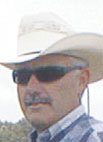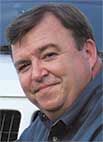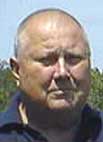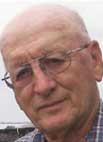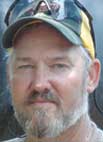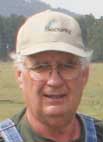A Taste of the Mountain
Thirty years ago Ed Martsolf began his bid to change the sheep industry. At the time, most sheep in the state of Arkansas were raised for the purpose of providing wool. Mr. Martsolf knew the market for wool was diminishing, but, he also knew a sheep market still remained largely untapped. If Ed could build a flock of sheep with the single purpose of becoming seed stock to produce a mild tasting meat, he could tap the meat market for lamb. However, Ed knew that this flock could not be just another flock of wool producing sheep; his flock must be chemical free, hair sheep; Katahdin Hair sheep.
Top Quality For Meat and Show
Owned and operated by Pat and Clark Cotten and son Elliott, Bending Tree Ranch is located near Damascus, Ark. The 20 acres of rough/wooded land they own offers good browse/forage for their animals. They also utilize another 40 acres for the animals’ browsing. In addition to breeding and raising both registered and commercial stock, she also breeds and sells show wethers. Dominique, a Market show wether, bred by Pat, won 1st place at the Arkansas state fair in 2007, and came in 5th in Over-All Grand Drive. They sell breeding stock nation-wide as well as sell some slaughter stock each year.
Carrying on the Tradition
Born and raised in Gentry, Ark., Larry Curran grew up going to the feed store his family ran for fun. The Curran family had bought the store in 1946. It's been run by the same family ever since. Larry started working at the feed store when he was in high school. Larry’s brothers and sister would eat every meal at the table together while growing up and are still close to this day. Larry said he feels blessed to have been able to work in and run the feed store for the last 36 years. Today, Larry and his wife of over 30 years, Lou Ann, have feed stores in Gentry and Elm Springs, Ark., and all Larry’s children live close by.
Kids on Calves and Calves on Grass
As Madison County residents gear up for the county fair this September, there will be a familiar sight on the sidelines of the showmanship ring: Jeff Williams instructing a child on how to handle an animal in order to win.
Building a Purebred Herd
In the middle of the second cutting and baling at the end of July, D.A. Dahlke worked hard to get his hay in before another rain. He partners with his brother, Doin; they bale hay from 40 acres, with half belonging to D.A., about 150 round bales each year.
Improving Efficiency
Cattle are in Lawson Hembree's blood. Actively ranching for the last 15 years, Lawson is the sixth generation of his family to raise cattle on the same plot of land near Ozark, Ark., since before Arkansas was a state.
The City’s Beef Farm
Chastain Farms is the classical depiction of how cattle farmers have evolved the past 80 years from expansive pasture-based operations focused on natural selection to small-scale farms focused on introducing technology to create high-quality cattle.
Done Rovin’ Beefalo Farm
What began as a retirement pastime has grown into something a bit larger. “It’s a hobby that got carried away,” said Larry Hacker. After 28 years of military life, Larry and Nelda Hacker of Lincoln, Ark., have traded a life of travel with the United States Army for “done roving” roots raising Beefalo cattle. In 1986 they were presented with an opportunity to purchase two heifers as a start in the Beefalo business. Since then their operation has grown to over 100 head of cows, providing breeding stock to buyers from Minnesota to Texas and Colorado to West Virginia.
Ozarks Roots-When the Groundwork’s Been Laid
A close look at Robert Stobaugh’s family tree will find farmers in every direction.
Rock Creek Farm
It's amazing to step out onto the very green, lush, peaceful farm that’s been in the Frost family for 105 years, and five generations. “Since 1903,” said Bob Frost, a third generation farmer in the mountains of Johnson County, Arkansas. "My granddad, John Frost, bought 80 acres in 1903, and added 40 more at a later date. He built a small house they later named the weaning house. His son Hall Frost was born in 1906; they then built the big white farm house, which sits across from the smaller home. When Hall got married they moved into the weaning house. They both spent their whole lives on this farm," Bob said.




